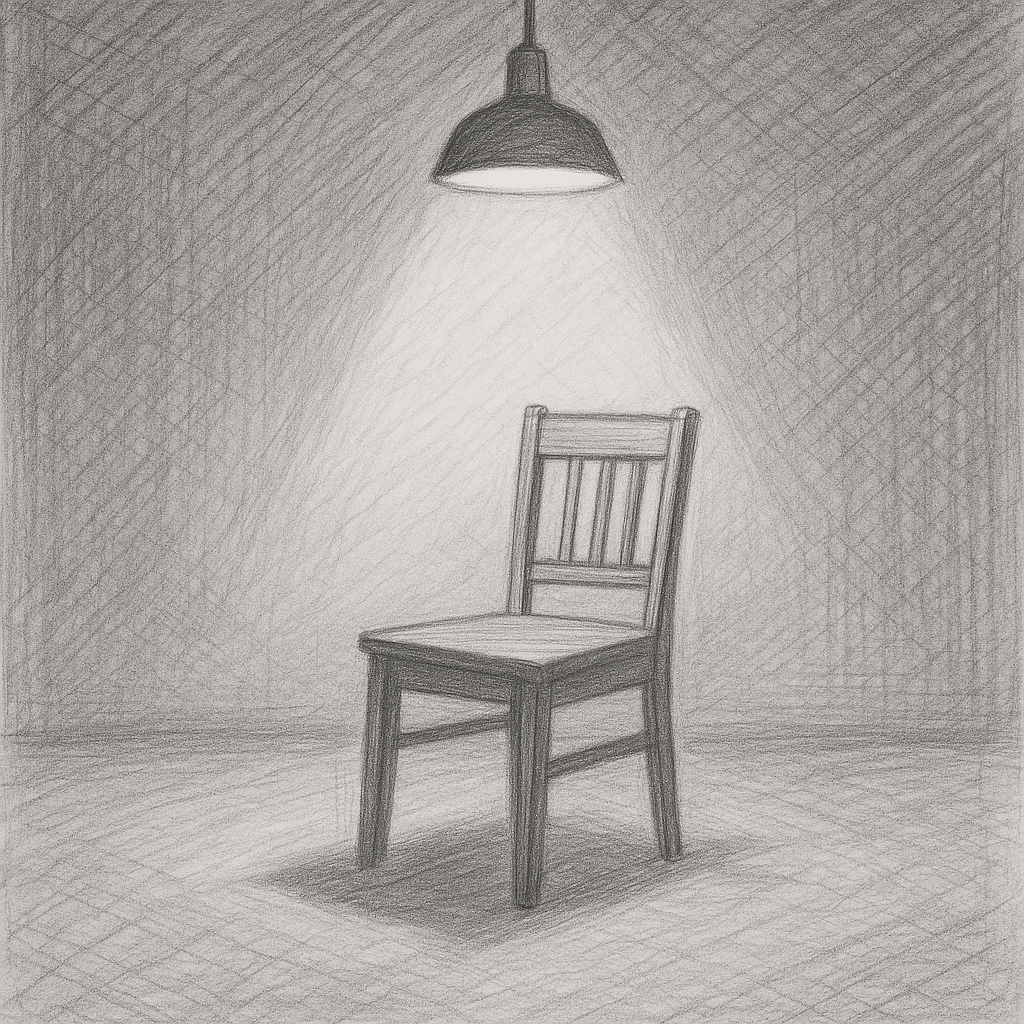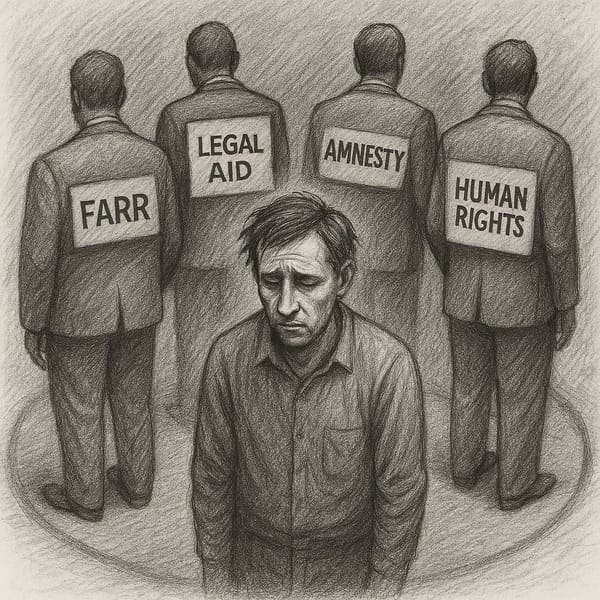When the System Stops Answering: Sweden, Refugees, and the Invisible Budget

“Material reception conditions shall provide an adequate standard of living for applicants, which guarantees their subsistence and protects their physical and mental health.”
— Directive 2013/33/EU, Article 17(2)
Sweden receives EU funding for the reception of persons under temporary protection, including Ukrainians, through mechanisms such as the AMIF programme. This support is contingent on compliance with reception standards outlined in instruments such as Directive 2013/33/EU.
“While this article focuses on the material consequences of exclusion, there remain open questions regarding the legal foundation on which our family’s classification under temporary protection was made — a topic we intend to explore in depth separately.”
My name is Yevhenii Verkhovych. I am a Ukrainian citizen, father of four children, and an ICT professional. I worked in Sweden for several years, including at two major companies.
Previously, I also served in international humanitarian institutions. I worked with the United Nations and the International Committee of the Red Cross, where I was involved in procurement panels, managed critical equipment for field missions, and helped deploy operational infrastructure in conflict areas, including in Ukraine.
I know how systems work. I also know when they stop working.
In 2024, my wife was pregnant with our fourth child. She had no income, no bank card, no child allowance, and no access to legal support or to medical care beyond emergency (akut) services.
And yet, the Swedish Migration Agency decided she no longer needed the daily allowance (dagersättning) she had been receiving. The justification? Her husband — me — had a job.
Let us be clear: the allowance she was receiving before that sudden cut was barely 1,800 SEK per month. Even this amount fell below Sweden’s own social minimum (riksnorm). Even this violated the EU directive, which requires that member states ensure an “adequate standard of living.”
It is also important: Sweden receives targeted EU funding to uphold these standards.
We appealed. On 15 June 2024, the Swedish Migration Agency issued a written rejection (Case no. 52226305) explicitly referencing the Swedish Family Code (Äktenskapsbalken) as grounds. In our appeal to Förvaltningsrätten i Härnösand (Case no. 2092–24), we argued that this national family code cannot override EU reception law. Yet the court upheld the denial on the same basis.
This is not a legal mistake. To the informed and attentive observer, this no longer resembles isolated misjudgments. It begins to trace the contours of a systemic refusal pattern — one that suggests design rather than coincidence.
2025: Loss of Income. Newborn in Arms. Still Denied.
In March 2025, our fourth child was born. I officially lost my employment — our only source of income. Until that point, I had been working continuously for several years.
We notified Migrationsverket in writing of both the birth and the income loss. On 11 April 2025, the agency rejected our application for daily allowance (dagersättning) for the entire family — the newborn and our three other children (Case no. 52226332), citing income from December 2024 to February 2025 as justification.
But that income had already ceased.
The agency provided no alternative. No minimum amount. No explanation of what a family with four children should live on. No mention of the child’s needs.
We were left without:
- Daily support (dagersättning),
- Child benefits (barnbidrag),
- Access to legal aid,
- Unemployment benefits,
- Pension rights,
- Medical care (beyond emergency-only for adults).
Taxpayer. Refugee. Ghost.
Over the past three years, I paid taxes in Sweden like any full participant in the system:
- 2022: 134,272 SEK
- 2023: 217,500 SEK
- 2024: 230,204 SEK
- 2025: 66,292 SEK
Total: 648 268 SEK in taxes.
And yet, I have no access to the rights those taxes are meant to secure. Not for me. Not for my wife. Not for our four children.
When I worked, we were excluded.
When the income stopped, we were excluded.
So where does the protection go? The EU funding? The tax contributions?
These are not rhetorical questions. They are technical ones. In my past roles, I was responsible for ensuring that resources reached their intended recipients, particularly in contested and high-risk zones in eastern Ukraine, where the conflict had already escalated. These were environments where a single logistical failure or delayed response could have direct consequences for safety and survival. While my work included international missions and deployments, my core operational experience is grounded in these frontline contexts that demanded precision, speed, and full accountability. I know how such frameworks are supposed to function, and when they don’t. I also know the stakes. During my work, one of my colleagues was killed by a stray shell in Donetsk while serving with the International Committee of the Red Cross. That loss remains a permanent reminder of what it means to work under conditions where protection is not theoretical — it is life and death.
And when none of them are visible in Sweden — for people clearly within the protection scope — a question begins to form. A quiet but immense one:
Has the Swedish protection framework drifted so far from its legal and financial commitments that neither EU law nor domestic taxation appears to translate into tangible support?
When Children Receive Debt Letters
In 2025, my newborn received a letter from Migrationsverket.
It stated: “Your father owes 6,300 SEK.”
Why is a baby addressed as a debtor? Why is a child told that their parent is a financial burden? What kind of system sends letters like that while denying that same child even the most basic material support?
This Is Not an Accusation. It’s a Record — and a Signal.
We are not accusing. We are documenting.
We are not blaming. But we are drawing a line. We are asking questions not only as individuals affected, but as observers who understand how these systems are funded, structured, and supposed to function:
- Why does a pregnant woman lose support because of her marital status?
- Why is the Swedish Family Code used instead of EU refugee law?
- Why is past income used to block present subsistence?
- Why are 648 268 SEK in taxes not enough to qualify for basic help?
- Why does EU-designated support not translate into real reception?
This article is based entirely on original documents from Swedish authorities. Citations, case numbers, decisions, and correspondence are available.
We are fully open to dialogue. We are ready to cooperate and provide all documents, attachments, and correspondence to any journalist, legal monitor, or EU institution interested in reviewing this case.
Because this is no longer just about our case. The record has begun. If there is no response, there will be continuation.
Someone must be able to answer.
Not for us. But for the integrity of the system itself — the one Europe promised to uphold.
Documented Case Files (Archives):
- Dossier 0: Correspondence with the Swedish Ombudsman
- Dossier 1: Letters to the Child Ombudsman
Prepared and submitted by Yevhenii Verkhovych


